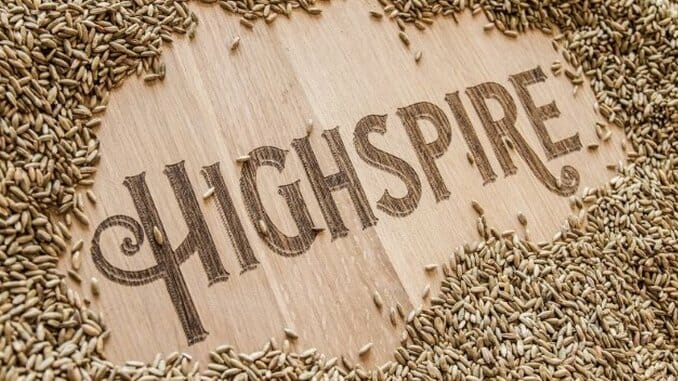
I’m never going to claim to be an absolute American whiskey authority—I certainly can’t speak with the surety that I can on trends within the world of craft beer—but it’s been hard for me to miss the fact that some interesting, unusual things are happening in the worlds of bourbon and rye, especially from small, independent distilleries. To make a more specific declaration, it seems to me that the trend is this: Craft distillers are shying away from “straight bourbon” and “straight rye.” Rather than trying to compete with the old-school recipes and well-aged products from bigger whiskey companies, more independent distillers are turning toward truly unique whiskey products that are mashed, fermented, aged and finished in novel ways that are completely outside the norm.
For a perfect example, look no further than my recent review of Lazy Guy Distillery’s 5th Article 1887 Rye whiskey. Produced with a large helping of dark-roasted malted barley (chocolate malt) typically used to brew porters and stouts in the beer world, it’s utterly unique and immediately difficult to categorize. Technically, that whiskey is still a rye, but it can’t even be rightly compared to any rye I’ve sampled before. It’s entirely its own roasty, individualistic thing.
Such it is with Highspire Pure Rye Whiskey. It may say “rye whiskey” on the label, but what you’re getting in the bottle is once again something unusual and genre-defying. It’s tough to even explain in a succinct way what makes it different from say, a bottle of Old Overholt, so let me break it down with bullet points.
– Traditional rye whiskeys would be 51 percent or more unmalted rye, with portions of corn and barley rounding it out. This whiskey is 100 percent, which is no longer very unusual, but what is unusual is that 10 percent of that grain is malted rye. I’ve had a malted rye whiskey only once before, also recently, from another small, independent distillery. But regardless, the consumer should be aware that this is a different flavor profile.
– Rather than aging their product in newly charred oak barrels, which would be necessary to earn the “straight rye” designation (in addition to two years of aging), Highspire is instead “swiftly aging” it in used California red wine barrels from Hope Family Winery in Paso Robles, California. In addition to that, they’re also adding some toasted oak staves to those barrels during the four months to extract some of the character one would get from newly charred barrels. So in terms of intent, it’s clear that what they’re going for is a whiskey that blends the character of both wine barrel and charred oak barrel aging.
Suffice to say, it’s an unusual concept, and one attached to a historical name from 1823 that had long since disappeared from memory. The name is more or less marketing claptrap, so let’s instead talk about the whiskey, which comes in a bell-shaped bottle capped with distinctive blue wax.
On the nose, it’s immediately obvious that you’re not drinking a classic style American rye whiskey. It’s complex and nearly all of the underlying aspects are more scotch-like than bourbon or rye—I’m confident that if you gave this to a typical whiskey drinker to sample, totally blind, they would guess it was Irish or scotch whiskey. It’s very buttery—butterscotch-like, really, with underlying red berry fruitiness and sour oak from the wine barrels. Honey notes suggest a relatively sweeter whiskey, and there’s also something more green and grassy, along with a not-very-pleasant dusty or sawdust impression. Missing are the deeper notes of caramelization, vanillans and especially rye spice that one typically expects in rye whiskey.
On the palate, you once again get an unusual combination of fruit, sweetness, wood, and finally spice. This is a very fruity whiskey, with pronounced red berry notes and an almost jammy quality. It again lacks the deeper richness or caramelization one gets from longer aging in a newly charred barrel, but you do get some rye presence here, although it doesn’t quite have the spice I’d like it to manifest. It’s presumably the barrel that ends up delivering this quality greatest, but it tastes more like the whiskey was made entirely with malted rye than the reality of it being only a small portion of the whole grist.
The question eventually becomes “Who is this whiskey made for?” One might characterize it as a rye for scotch or Irish whiskey fans. Or a scotch-style whiskey for rye drinkers. Either way, it seems distinct but simultaneously confused.
This is not likely a whiskey that will appeal very much to lovers of classic-style American rye; nor is it something you’ll want to try in a Manhattan. However, I do believe that the fruit-forward flavor profile certainly has a place in the market. There are likely lovers of fruit-forward, sweeter, more buttery, wine-influenced whiskeys out there who don’t care for the classic rye flavor profile, but Highspire’s challenge will be in finding and reaching those people. It’s a young whiskey made with an interesting process that “just so happens” to involve economically advantageous short aging, but you can’t fault the results as “same old, same old.” They’ve made a unique product, but it’s not likely to be an everyday sipper for me.
Distillery: Kindred Distilled Spirits
City: Crestwood, KY
Style: American rye whiskey
ABV: 40%
Price: $40-45
Jim Vorel is Paste’s resident craft beer and whiskey guru. You can follow him on Twitter for much more drink content.